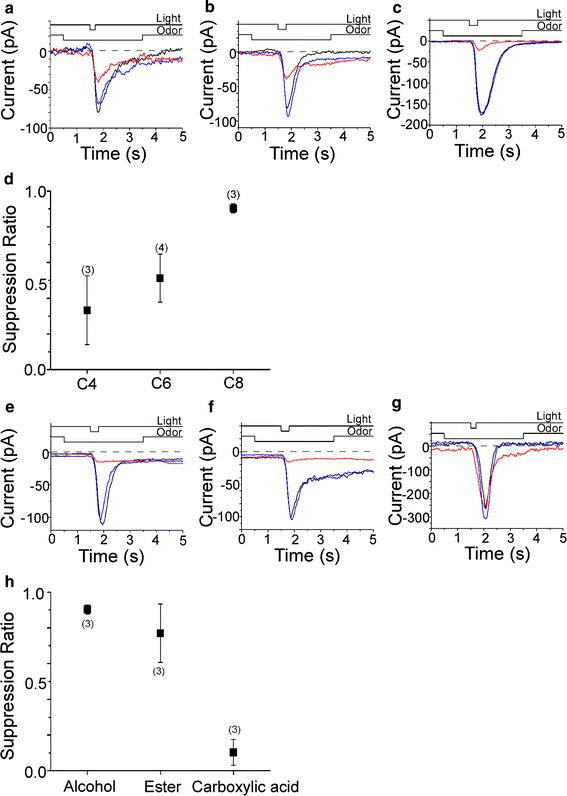Fig. 7.

Suppression of cAMP-induced current by odorants. a Effect of 1 mM C4 alcohol on the cAMP-induced current. Odorant concentrations were 1 mM except for C8 alcohol (0.9 mM), C8 ester (0.8 mM), and C8 carboxylic acid (0.8 mM). After the light-induced current was recorded as a control (black), odorant was applied before light stimulation to cover the response period observed in the control (red). Pressure of odor stimulation was 50 kPa, duration was 3 s. Duration of the light stimulation was 200 ms. After a 20-s interval, the light stimulation was again applied in the absence of chemical (blue) to confirm the recovery. Downward deflection of the upper traces indicates the timing and duration of the light and odor stimulation. V h = −50 mV. Light stimulation was 0.62, as a relative value in our setup (see Ref. [9]). SR = 0.54. b Effect of 1 mM C6 alcohol on the cAMP-induced current. Light stimulation was 0.37. SR = 0.68. c Effect of 1 mM C8 alcohol on the cAMP-induced current. Light stimulation was 0.62. SR = 0.88. d Relationship between chain length of n-alcohols and suppression ratio. e Effect of 0.9 mM C8 alcohol on the cAMP-induced current. Light stimulation was 0.62. SR = 0.9. f Effect of 0.8 mM C8 ester on the cAMP-induced current. Light stimulation was 0.48. SR = 0.91. g Effect of 0.8 mM C8 carboxylic acid on the cAMP-induced current. Light stimulation was 0.62. SR = 0.14. h Relationship between functional groups and suppression ratio. Error bars show SD. Numbers in parentheses indicate the number of cells
